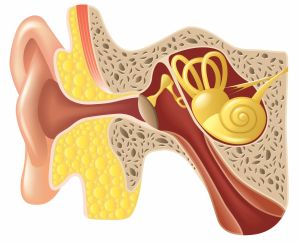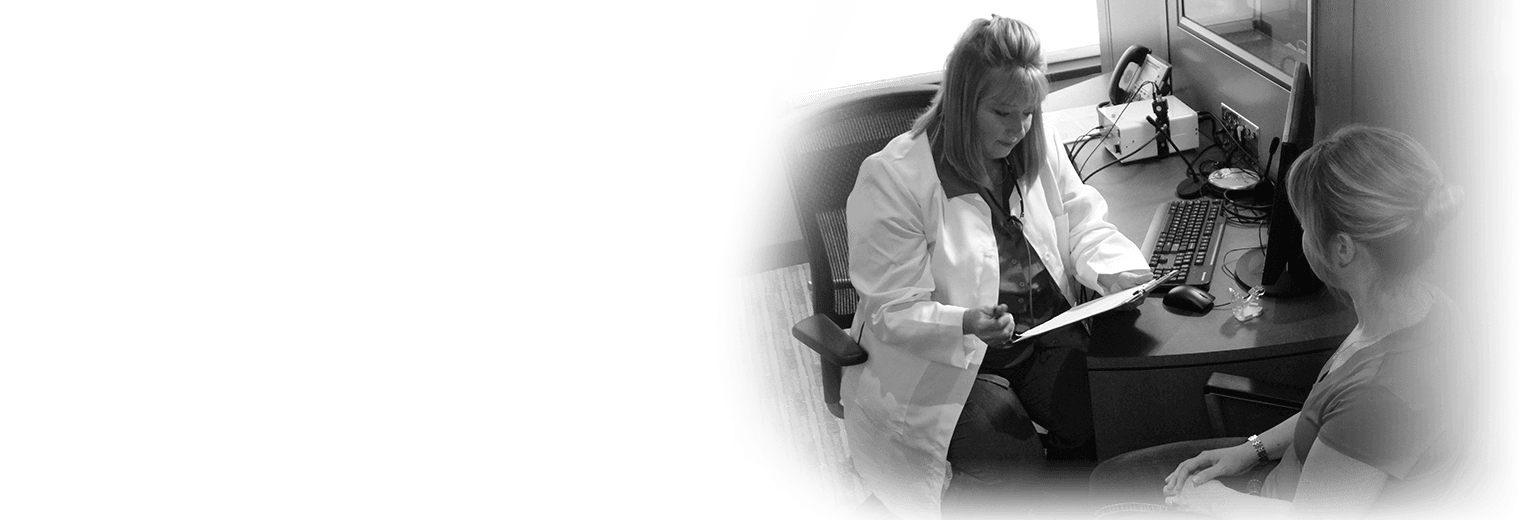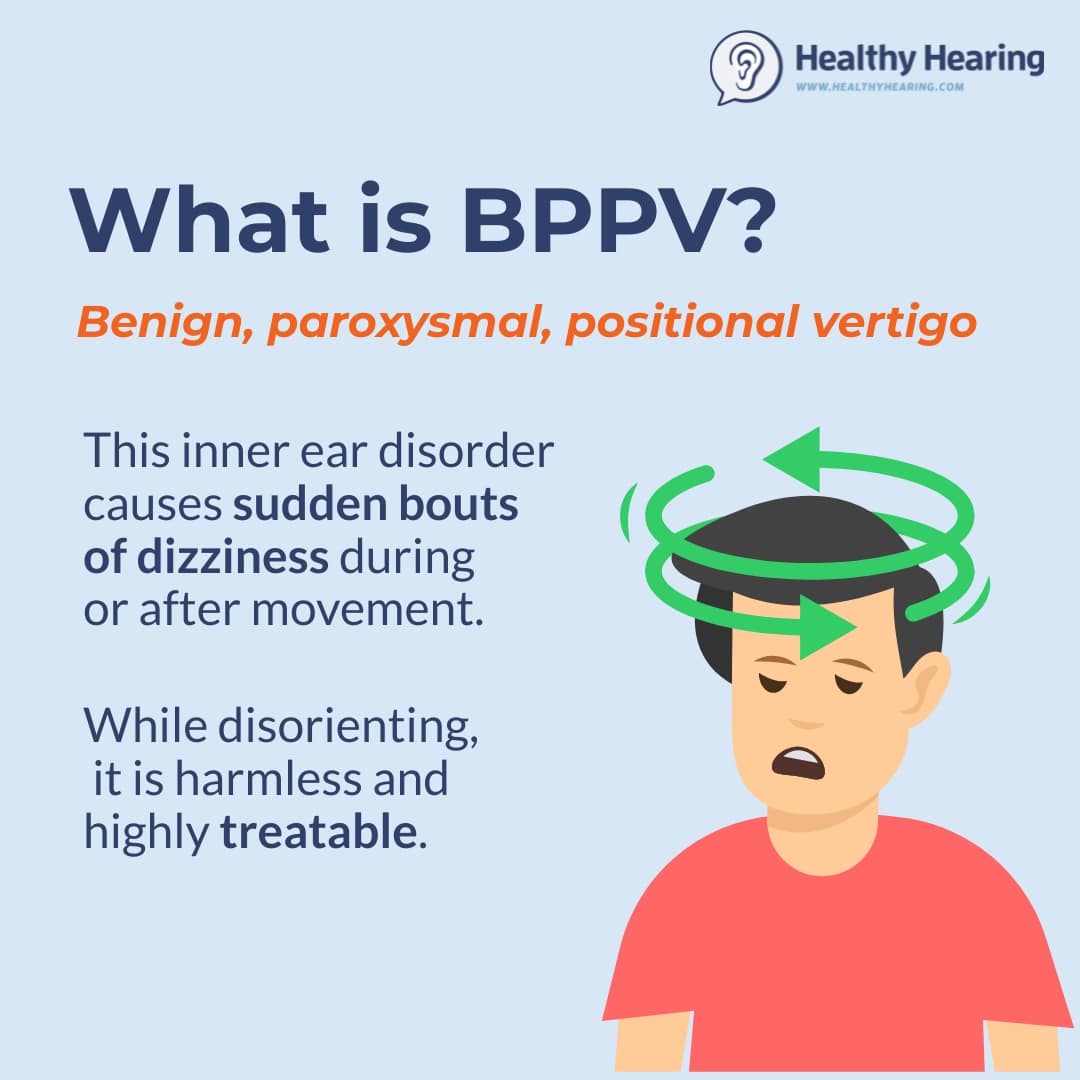|
www.HealthyHearing.com |
Dizzy from moving? It could be BPPV
By Joy Victory, managing editor, Healthy Hearing Last updated on: October 16th, 2025 This inner ear disorder causes brief bouts of dizziness during movement. The good news? It is highly treatable. Key points:
Sometimes referred to simply as “positional vertigo,” benign paroxysmal positional vertigo (BPPV) is common and treatable. BBPV stands for:
Put together, this means it is a brief, intense sensation of spinning that occurs when getting out of bed or turning your head too quickly.
Symptoms of BPPVThe sole symptom is abrupt dizziness that occurs during or after body movements. Imagine waking up in the morning: You open your eyes and start to roll out of bed just as usual, but then you’re stopped by a sudden sensation that the room is spinning. You have to hold the furniture and walls just to get out of bed and take a few steps. After you stand in one position for a few minutes, the feeling passes. Understanding the body's balance system
above the cochlea (the snail shell shape) contain crystals that move in respond to movement. In BPPV, these crystals are dislodged. Your inner ears house organs that detect hearing and sense of balance, known as the auditory and vestibular systems. When everything is working properly, the vestibular system helps your balance. The vestibular system is composed of the utricle, the saccule and three semicircular canals. The different structures of the vestibular system are all built in a similar manner: They contain tiny rocks, which are crystals made of calcium carbonate that float in a gel-like fluid. (Yes, you literally have rocks in your head!) Medically, these crystals are known as otoconia or canaliths. Normally, when you move your head, the shift in gravity or velocity moves the crystals around in the gel and changes the pressure against the nerve receptors. Each of the five vestibular system structures is oriented in a particular manner so that we can detect head position and motion in all different directions. Why BPPV happensOccasionally, the crystals get dislodged from the gel and fall into the wrong space, known medically as canalithiasis. When this happens, the nerves that send messages to your brain about your body position are abnormally stimulated. This vestibular disorder results in the perception of vertigo, or spinning. For most people, this occurs in the posterior semicicular canal (the one in the back). More atypical forms are discussed below. What causes BPPV?Most of the time there is no known cause for why the otoliths are shifted out of place. However, in some cases, BPPV is linked to:
Diagnosing BPPV
BPPV. Getting help begins with a physician's evaluation for dizziness. They will run several tests, such as the Dix-Hallpike test, which mostly involve moving into different positions to see if it triggers dizziness. Your doctor or provider will also watch your eyes closely. Why? If BPPV is present, your eyes will move in a particular rapid way, known as nystagmus. This is a sign that improper nerve signals from the body's balance system are confusing the visual system.
BPPV treatmentThe good news: Sometimes, it goes away on its ownFor a lot of people, BPPV is an unpleasant experience that occurs for a few days and then fixes itself. The crystals will either move out of the way or dissolve and the problem is gone just as quickly as it arrived. But when it doesn'tThere are exercise-based posture and head movements that provide fast relief, referred to as canalith repositioning procedures. There are at least four techniques or maneuvers with specific names, including Epley, Semont, Foster and Brandt-Daroff. They typically consist of a guided series of postures. A physician or clinician can physically guide you through the treatment because if it is successful, you will likely experience dizziness. As you are placed in the different postures, you will stay in each position until any dizziness fatigues. When all of the postures are completed, the crystals are typically cleared from the path of the nerve receptors. At-home exercisesAs this condition often comes back, the physician or clinician may send you home with a copy of the exercises for you to try on your own if you experience the symptoms again. There is no medication to treat or reduce the symptoms. This type of dizziness is rarely progressive and usually responds well to treatment; however, permanent issues may require surgical intervention. Can you treat BBPV yourself?Yes, some people with BPPV learn how to do the postures on their own and can self-treat using the maneuvers, usually under the guidance of their doctor. This is only recommended for people who have confirmed BPPV. What about 'atypical' BPPV?Usually the posterior semicircular canal of the balance organ is affected, but sometimes the other canals are affected, resulting in "atypical" types of BPPV. When this happens, it creates unique symptoms and requires different postural motions for treatment. In more severe cases, such as after head trauma, all of the canals will be affected. What if I also have tinnitus?BPPV does not cause tinnitus (ringing in the ears) or vice versa. It's important to tell your healthcare provider to get the right diagnosis. Several other disorders and/or infections can cause dizziness and tinnitus, such as Meniere's disease or autoimmune disease. And in some cases, a person may have both tinnitus and BPPV, but it's a coincidence and they're not related to each other. What about hearing loss?BPPV does not cause hearing loss. However, if your BPPV was caused by trauma, the trauma may have also caused hearing loss that needs to be evaluated and treated accordingly. BPPV, vertigo and anxietyIf BPPV is persistent, a person may develop anxiety related to having dizziness attacks. Few things are as frightening as feeling like your body is spinning uncontrollably. "Under these circumstances, anxiety and panic are not only rational, but the proper emotional response of a sane person experiencing this kind of difficulty," writes author Glenn Schweitzer, who shares advice on why anxiety often accompanies vestibular and balance disorders, and what to do about it. What do I do if I feel dizzy?Dizziness is a symptom of many different conditions. BPPV is just one condition that causes a spinning type of dizziness. If you are experiencing dizziness in any form—unsteadiness, lightheadedness, feeling faint or spinning—please contact a physician to help differentiate the cause and determine the best course of action. More: Is your dizziness from labyrinthitis, BPPV or Meniere's? How to know Joy Victory, managing editor, Healthy Hearing
You are reading about: Related topics More information about hearing loss, hearing aids, hearing aid brands and assistive devices. Featured clinics near me
Earzlink Hearing Care - Reynoldsburg Find a clinicNeed a hearing test but not sure which clinic to choose? Call 1-877-872-7165 for help setting up a hearing test appointment. Related contentThe Healthy Hearing Report |
|
www.HealthyHearing.com |
Dizzy from moving? It could be BPPV
By Joy Victory, managing editor, Healthy Hearing Last updated on: October 16th, 2025 This inner ear disorder causes brief bouts of dizziness during movement. The good news? It is highly treatable. |




 Joy Victory has extensive experience editing consumer health information. Her training in particular has focused on how to best communicate evidence-based medical guidelines and clinical trial results to the public. She strives to make health content accurate, accessible and engaging to the public.
Joy Victory has extensive experience editing consumer health information. Her training in particular has focused on how to best communicate evidence-based medical guidelines and clinical trial results to the public. She strives to make health content accurate, accessible and engaging to the public.